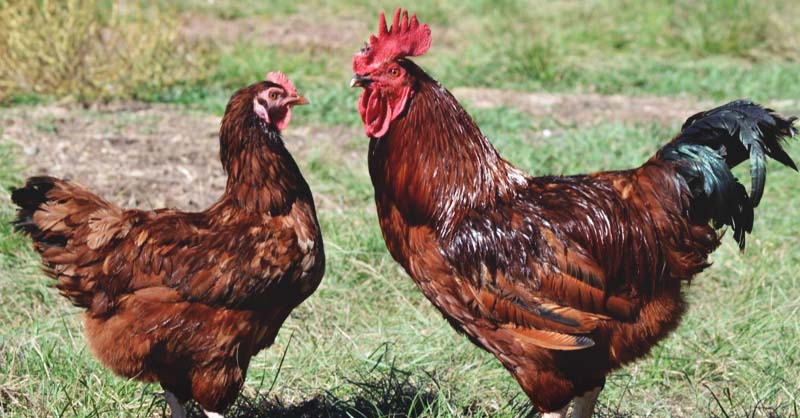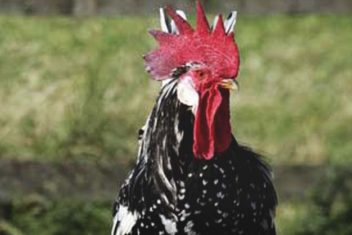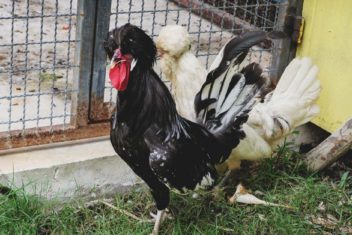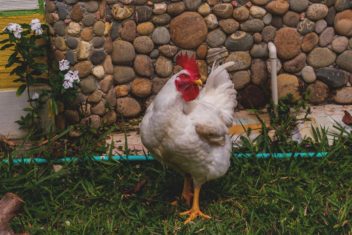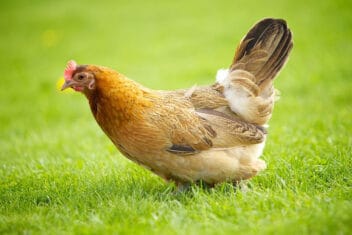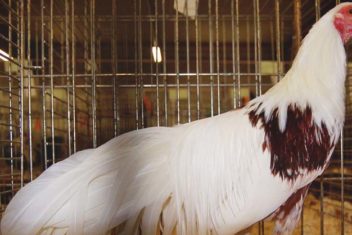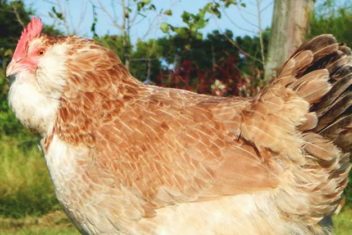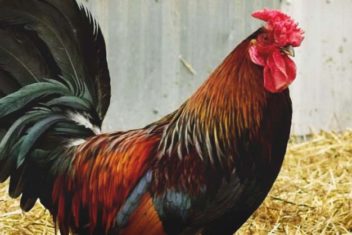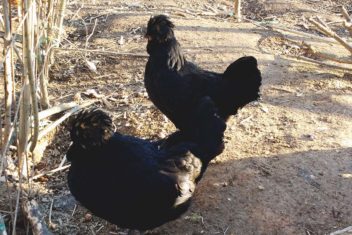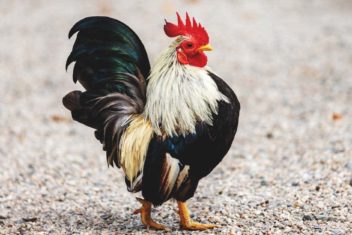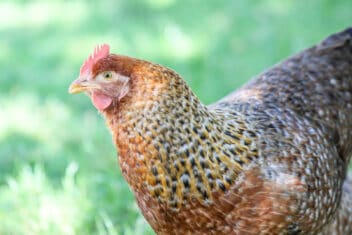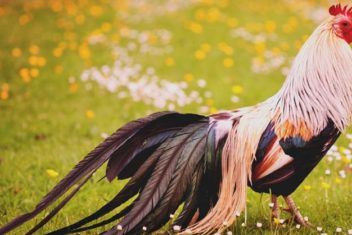If you’ve been around chickens for very long, chances are you’ve heard of Rhode Island Reds.
These birds are a breed from Rhode Island and are incredibly popular in the chicken keeping industry. Well known for their egg and meat production qualities, many chicken keepers can’t imagine their chicken coop without them.
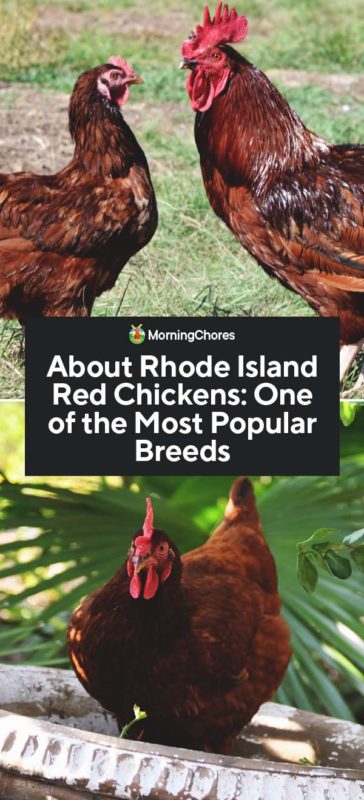
About Rhode Island Red Chickens
Rhode Island Reds were bred in the late 1800s and accepted into the American Poultry Association in the early 1900s. The main original stock for this breed was Malay chickens, which had been imported by sailors as they explored the world.
While these birds were originally bred for meat and egg production, only original lines still have exceptional meat production. In recent years, Rhode Island Red have been bred mainly for egg production.
Rhode Island Red Characteristics
1. Size and Weight
Most modern-day Rhode Island Red chickens are smaller than the original heritage line of Rhode Island Reds. Average weight of a Rhode Island Red rooster is 8.5 to 9.5 pounds with hens a bit smaller, near 6.5 to 7.5 pounds. If you have an older line, your birds may be larger.
2. Temperament
Rhode Island Reds aren’t exactly known for being laid back and docile. Roosters can have quite a reputation to be territorial and aggressive. Hens aren’t very aggressive, but they are a bit standoffish.
An older strain of Rhode Island Reds might have some occasionally broody hens, but most modern lines will have hens with a very low chance of going broody.
3. Egg Production
The main reason Rhode Island Reds are so popular is their excellent egg production. A single hen can lay between 260-280 eggs in a year. This breed is also popular for the size of their eggs, as
4. Meat Production
If you have Rhode Island Red chicks purchased from a feed store or hatchery, chances are they won’t be a good bird for meat production.
I would recommend buying from a small scale breeder if you want a good bird for dual purpose uses. Small scale Rhode Island Breeders are generally passionate about preserving the heritage of the breed.
Rhode Island Red chickens from older lines will have good meat production, but they might be somewhat slower growing.
Taking Care of Rhode Island Reds
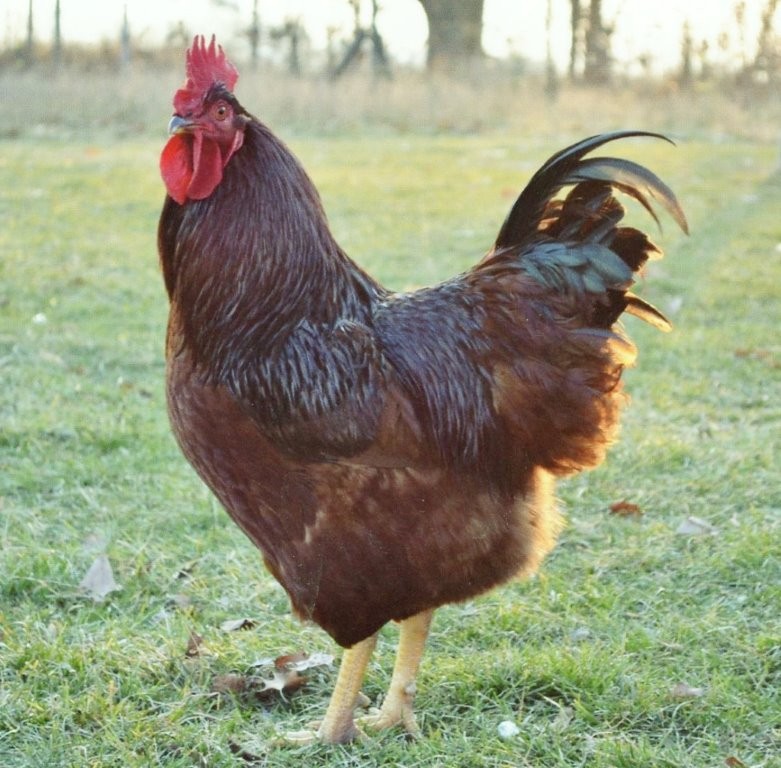
1. Feeding and Nutritional Needs
Rhode Island Reds are low maintenance birds when it comes to feeding.
Supply your chicks with a good quality chick starter for the first several weeks. Around 16-18 weeks of age, transition your young birds to a good laying feed. It’s also good to supply an additional source of calcium such as oyster shells in a separate dish so your hens can eat it as needed.
2. Housing and Fencing
Inside the coop, 4 square feet per bird is adequate space to insure everyone has enough room. If you keep your birds in a run, allow a minimum of 10 square feet per bird so they have space to stretch legs.
3. Health Issues and Care
Rhode Island Reds are robust and hardy birds with very few health issues. Though any chicken can still fall prey to illness, Rhode Island Reds aren’t any more susceptible than the next bird.
Maintaining your flock well by keeping a clean coop, not overcrowding, keep a good dust bathing area and keeping a watchful eye on your birds will go a long way in prevention.
4. Breeding
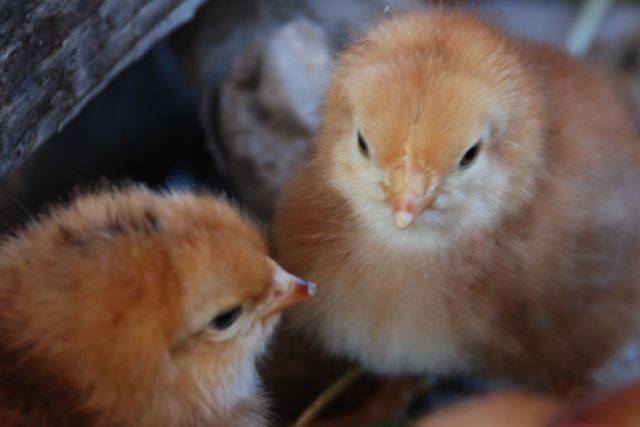
Breeding Rhode Island Reds can be a profitable hobby if you are breeding an older heritage line because many fanciers are interested in maintaining this breed.
Rhode Island Reds are also commonly used in crosses such as red sex links and do well in hybrid breeds.
Alternative Breeds
1. Plymouth Rocks
Another heritage dual purpose breed, Plymouth Rocks have about the same meat and egg production as Rhode Island Reds. However, Plymouth Rocks have a much sweeter and friendlier personality than Rhode Island Reds, so they will make better birds for a pet flock.
2. Red Sex Links
Cinnamon Queen, Red Star, Production Reds, these birds go by many names but they are all the same bird. These birds are a cross between two purebred chickens, creating a chick that can be sexed based on its down color at hatch. Red Sex Links are fantastic layers and do very well in a laying flock.
3. Australorps
Australorps have the same meat production qualities as Rhode Island Reds, but they do have better egg production.
These chickens have much better temperaments towards people than Rhode Island Reds might, as well as making excellent mothers.
Fun Facts About Rhode Island Reds
In 1925, the Rhode Island Red Club of America donated money for the erection of a monument in Adamsville for the Rhode Island Red Chickens.
In 1988, a monument was placed in Rhode Island in honor of Rhode Island Red chickens and the farmers that bred them.
Despite the fact they aren’t the friendliest birds, Rhode Island Reds are very popular chickens with a reputation for excellent egg production. With their spunk and peppy attitudes, Rhode Island Reds will do well in any flock and you’ll love the addition to your coop.

